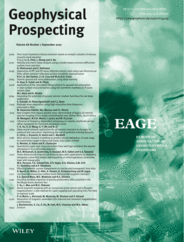-
oa Deep neural network application for 4D seismic inversion to changes in pressure and saturation: Optimizing the use of synthetic training datasets
- Source: Geophysical Prospecting, Volume 68, Issue 7, Aug 2020, p. 2164 - 2185
-
- 01 Feb 2020
- 24 May 2020
- 15 Jun 2020
Abstract
In this work, we tackle the challenge of quantitative estimation of reservoir dynamic property variations during a period of production, directly from four‐dimensional seismic data in the amplitude domain. We employ a deep neural network to invert four‐dimensional seismic amplitude maps to the simultaneous changes in pressure, water and gas saturations. The method is applied to a real field data case, where, as is common in such applications, the data measured at the wells are insufficient for properly training deep neural networks, thus, the network is trained on synthetic data. Training on synthetic data offers much freedom in designing a training dataset, therefore, it is important to understand the impact of the data distribution on the inversion results. To define the best way to construct a synthetic training dataset, we perform a study on four different approaches to populating the training set making remarks on data sizes, network generality and the impact of physics‐based constraints. Using the results of a reservoir simulation model to populate our training datasets, we demonstrate the benefits of restricting training samples to fluid flow consistent combinations in the dynamic reservoir property domain. With this the network learns the physical correlations present in the training set, incorporating this information into the inference process, which allows it to make inferences on properties to which the seismic data are most uncertain. Additionally, we demonstrate the importance of applying regularization techniques such as adding noise to the synthetic data for training and show a possibility of estimating uncertainties in the inversion results by training multiple networks.




